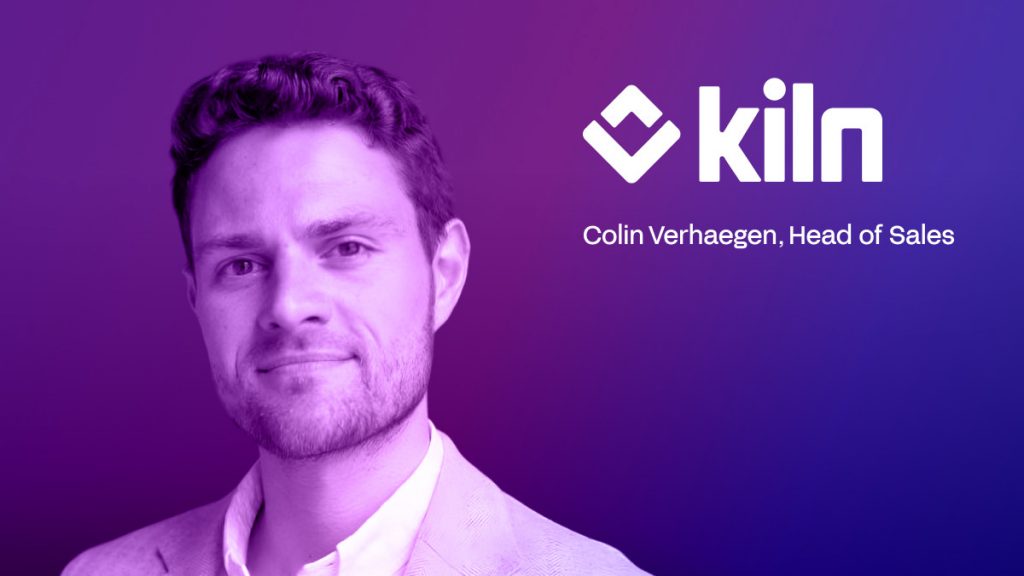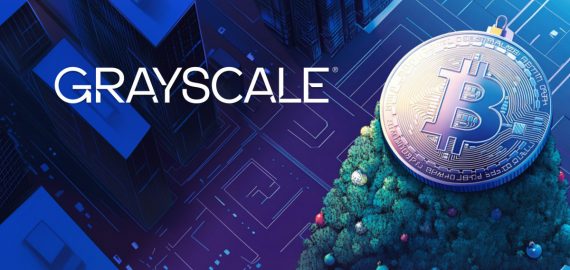Bridging Regions and Markets, How Kiln’s White-Labeled Staking Solutions Are Accelerating Crypto Adoption


In Brief
Colin Verhaegen discusses Kiln’s growth from a French startup to a leading provider, managing over 40 protocols and collaborating with major exchanges in Asia.

In this conversation, Colin Verhaegen, Head of Sales for APAC at Kiln, provides an inside look at the evolving field of institutional staking and its rapid growth in global markets. With cryptocurrency staking emerging from niche origins to become a refined financial service, Verhaegen shares insights into Kiln’s journey from a small French startup to a leading provider managing over 40 protocols and collaborating with major exchanges across Asia.
He discusses the company’s approach to white-labeled liquid staking solutions and regional adoption trends, highlighting how Kiln is adapting to the increasing demands of the institutional landscape while maintaining a zero-slashing record, a key marker of reliability in the expanding field of digital asset rewards.
Can you share your journey to Web3? How did you join Kiln?
It’s not the traditional path that most people take in crypto, I’d say. I wasn’t a big investor or degen, and I didn’t trade too much, just a little bit in 2020 and 2021.
That’s when I started thinking, is there an actual career here? Is there more than just the ICOs and trying to understand fundamentally what was happening in the background? One of my older university friends actually worked at Kraken Ventures, a big VC in the crypto space. At the end of 2021 or the beginning of 2022, I asked him if there was an actual career in crypto and blockchain and what companies they were looking at or investing in. He said there was this small French company doing staking, and they seemed very solid, so he offered to connect me to the founder, Laszlo, who is now our CEO. The rest is history.
It’s been almost three years now. We were not even called Kiln back then, we had a different name. We’ve grown from 10-15 people in 2022 to 85 now. So that’s a bit of my personal journey and how I ended up in crypto. About a year ago, they decided to ship me over to Singapore to set up the APAC office, trying to replicate the successes we had in Europe and HQ and bring that DNA to the APAC region.
Can you elaborate on Kiln’s approach to staking and restaking?
Staking is our core business. We started mostly on Ethereum, being one of the first staking providers on Lido. But then we quickly expanded to other protocols as well, and now we operate on about 40 different protocols.
Now you have the whole notion of restaking. Just as we were early supporters of staking and liquid staking with Lido, we’ve been early supporters and providers of restaking protocols such as EigenLayer. We run quite a bit of AVSs and help restakers earn more rewards thanks to rehypothecating their ETH and opting into actively validated services on EigenLayer to improve the rewards generated from their assets.
We do that in our own operator. We have some white-label operators we run for liquid restaking protocols. I believe we’re the second biggest EigenLayer restaked operator right after Coinbase. We’re also supporting other earlier projects in that space, like Symbiotic on Ethereum and Jito restaking on Solana.
How does Kiln’s approach to liquid staking tokens differ from that of other providers in the market?
The traditional approach to staking is that you need 32 ETH to do it natively. But not everyone has that – 32 ETH is about $91566 currently. So the solution was liquid staking, where you could stake any amount, through protocols like Lido, Rocket Pool, etc.
What we do differently is that we have a very white-labeled approach to our products. We allow other entities and companies to actually emit their own liquid staking derivatives (LSDs). So this could be branded in whatever way they want – imagine a big exchange wanting to do liquid staking and emit their own token, like a “Trust Wallet ETH” or “Bitget ETH.” We can operate it for them, and they can manage their whole ecosystem. In the future, we may even see institutions creating their own LSDs, like a “BlackRock ETH.”
This gives them a lot of control over the parameters, like whether it’s permissioned or permissionless, what type of token is being emitted, and what kind of DeFi ecosystem they build around it. It’s a pretty unique offering that we can help institutions with.
Can you elaborate on the technical challenges with operating on more than 40 protocols?
Doing 40 or 50 protocols these days is already a challenge, especially if you have very high standards like we do to keep everything running smoothly, with no slashing events, no missed rewards, and ensure customers can fully trust us with their assets and the performance and rewards we generate.
A lot of it comes down to standardizing our approach. Our SREs (site reliability engineers) and others put a lot of work into streamlining the deployment, management, and monitoring of these protocols in containerized environments like Kubernetes. They’re assisted by our product team, smart contracts team, and protocol specialists, as each protocol is a bit different.
The goal is to scale and monitor things at a very high level so we can manage it all. We do everything in-house, as we believe these operations are business-critical. That means sometimes we have to say no to supporting a certain protocol if it falls out of our standard or is too difficult or risky. We also dynamically spin down protocols if they don’t take off as expected or there are better opportunities. Our teams put in a lot of technical work.
You highlighted that you work with EigenLayer. Can you name any advantages of working with such a protocol?
It’s not easy to support these emerging protocols at a very large scale and make them accessible to a specific market. The technical excellence from our team and the EigenLayer team is one part. But these protocols also need distribution.
That’s where Kiln’s advantage comes in. As a company with a very broad distribution channel, a lot of partners, and a good reputation, we can distribute those protocols and opportunities to our clientele, which is typically institutional.
For example, with EigenLayer, we built a custom flow integrating their restaking services into the Crypto.com portal. So Crypto.com users can stake and restake their ETH without having to go through all the complexities of dealing with the EigenLayer portal directly. We abstract all that complexity and provide a simplified, one-click experience.
We do similar things when integrating with custody platforms. The goal is to simplify the reporting, flows, and user experience so our partners can trust us to build that tech and flow for them.
Do you find any differences between the blockchain and Web3 industries in Europe and Asia right now?
You definitely see regional differences between the US, Europe, and Asia. Certain protocols are more popular in certain regions. The type of customers we serve also differs.
In Asia/APAC, a lot of our large clients are exchanges. If you look at the top 10-20 centralized exchanges globally, about 80% of them are in the APAC region. So it’s very heavy on the retail and exchange business. This means there’s quite a lot of adoption, as these big exchanges represent a lot of retail users.
However, the differences are not just in terms of client type. You also see differences in the type of tech being built. Some regions, like Asia, are more focused on use cases like GameFi, while the US and Europe may be more focused on infrastructure.
So, in summary, yes, you definitely see regional differences globally in terms of adoption, client type, and the focus areas of the technology being developed.
What are the key differences between Kiln’s offerings for custodians, exchanges, and wallets? How does the company tailor its services to meet the specific needs of each client?
Our clients are very different – custodians, centralized exchanges, and retail wallets. But because we’re a product-focused company, a lot of our products work across all of them, they just need a bit of different implementation or a different angle.
For custodians like Komainu, Laser Digital, and Hex Trust, they rely a lot on our reporting APIs, as accurate data on positions, rewards, staking, etc. is important for their institutional clients and regulators.
Exchanges rely more on us having broad protocol coverage, as they typically support hundreds or thousands of tokens across 10-100 protocols.
Wallets care a lot about the UI/UX experience. So, they utilize our APIs, SDKs, and smart contracts to integrate a smooth and feature-rich experience for their users.
Ultimately, the core of our staking products and services – the APIs, SDKs, and smart contracts – are built to be used across all these different client segments. It’s about tailoring the implementation and focus areas to meet their specific needs.
What innovations have you introduced in the validators as a service offering to differentiate you from competitors for institutional clients?
The validator as a service or node as a service market is becoming more commoditized, as the pure infrastructure is not that difficult technically. The key differentiator for us is the integration and ease of use we provide.
How easily can clients integrate new protocols? How easily can they build a product on top of our offerings? For example, an exchange wanting to launch an “earn” section – we can make that super easy for them, much more so than other competitors.
For wallets wanting DeFi access, they could integrate each protocol individually, or they could go through Kiln and get that integration very quickly. Beyond the integration, for institutional clients specifically, we’ve built in a lot of support for the typical custodians they want to use, like BitGo, Anchorage, Fireblocks, and Hex Trust. That “peace of mind” and ease of use makes a big difference.
Even at the pure infrastructure level, there are performance differences between staking providers in terms of APY generation, uptime, slashing records, and ability to exploit MEV opportunities. So we differentiate there as well.
What security measures and auditing processes does Kiln employ to ensure the safety of user funds and the integrity of its smart contracts?
It’s important to know that Kiln is fully non-custodial. We never take custody of any of the assets. All of our clients and their clients, whether institutional or retail, keep 100% control of their assets.
When it comes to protocols, not all have slashing enforced like Ethereum does. We have specific contractual and technical measures in place to protect against slashing. Kiln has a zero slashing record, and we’re endorsed by the Ethereum Foundation for our anti-slashing approach.
Our infrastructure and smart contracts are certified SOC2 Type 2. We also do regular audits and have continuous monitoring and threat detection. Many of our clients and partners, like Ledger Donjon, Binance security team, Crypto.com security team, have also vetted our contracts and infrastructure.
On top of that, we have bug bounties so white hat hackers can spot potential issues in our code and infrastructure, and we reward them for that. We’re doing everything possible to avoid any potential risks.
How does Kiln approach the development of its product roadmap, and what input do clients and partners have in shaping the future direction of the platform?
Developing the product roadmap is probably one of the hardest jobs in crypto. Our vision is to become the leading rewards platform, to democratize value in the digital asset space, starting with staking but then also looking at DeFi, stablecoins, real-world assets, and other ways to generate on-chain rewards.
A lot of input comes from customer conversations, the sales team, the product team, the tech teams, and the protocol teams at Kiln. We have a culture of “meritocracy of ideas,” where everyone has the mandate to spot opportunities and speak up. Then, the product leadership makes the final decisions on the roadmap.
Some things we’re excited about for 2025 include Bitcoin staking, how to enable that for our institutional clients, as well as everything happening around stablecoins, remittances, and cross-border payments going on-chain. We’re looking at ways to provide yield and reward solutions in those areas.
Ultimately, we hope that regardless of the US election outcome, we’ll get clearer regulations, especially from an institutional perspective, so companies like ours have a defined framework within which to work. And on the retail side, better protection of consumers from scams, pump-and-dump schemes, etc. would benefit the entire industry.
Do you think the current US elections will somehow influence the crypto market?
It’s a tough question because you don’t know which way the elections will go. For us at Kiln, not so much. I think we already have our roadmap ready. Certain policies or a win by a particular party could accelerate or slow down our roadmap, but these are very blurry things.
Ultimately, my personal hope is that regardless of the election outcome, we’ll be in a better space than the last few years, where it was not very clear, companies got subpoenaed, and there wasn’t a clear regulatory framework to work within. I hope we get more clarity on regulations, especially from an institutional perspective, as well as better protection for retail consumers from scams and other issues. A clear framework would benefit everyone in the industry.
Disclaimer
In line with the Trust Project guidelines, please note that the information provided on this page is not intended to be and should not be interpreted as legal, tax, investment, financial, or any other form of advice. It is important to only invest what you can afford to lose and to seek independent financial advice if you have any doubts. For further information, we suggest referring to the terms and conditions as well as the help and support pages provided by the issuer or advertiser. MetaversePost is committed to accurate, unbiased reporting, but market conditions are subject to change without notice.
About The Author
Victoria is a writer on a variety of technology topics including Web3.0, AI and cryptocurrencies. Her extensive experience allows her to write insightful articles for the wider audience.
More articles

Victoria is a writer on a variety of technology topics including Web3.0, AI and cryptocurrencies. Her extensive experience allows her to write insightful articles for the wider audience.

















































